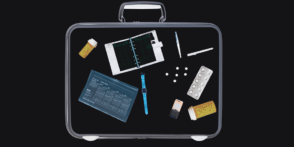Joining Forces
Forming relevant partnerships can help motor vehicle administrators and highway safety offices accomplish more by sharing the workload, resources—and the results
“Safety is a team sport” is a sentiment that embodies the challenge many motor vehicle administrators face in their efforts to promote traffic safety in their communities. Since the issue touches everyone, entities must work together to find the best solutions.
“We can’t do this alone,” says Chrissy Nizer, AAMVA’s chair of the board and administrator, Maryland Motor Vehicle Administration. “We’re much stronger together. We each bring different perspectives and experiences, which can help us come up with the best possible solutions for this multi-faceted problem,” she says.
According to data from the National Highway Traffic Safety Administration (NHTSA), an estimated 20,160 people died in motor vehicle crashes in the first half of 2021, an increase of 18.4% over the same period in 2020. That’s the largest number of fatalities in one period since 2006.
To put a dent in that number, however, motor vehicle administrators can not work alone. Aligning their efforts with organizations with similar goals to improve traffic safety enables them to acquire resources and information that they may not be able to access on their own. While the path to partnership is not always easy, the relationships DMVs build with other government agencies, nonprofit groups and for-profit companies can produce positive long-term results that benefit all partners and their constituents.
Local and Statewide Partnerships
The state of Washington is fortunate to be one of the few states in the country with its own state-run commission, says Shelly Baldwin, director of the Washington Traffic Safety Commission (WTSC). For as long as she’s been with the agency, Baldwin says partnerships have been ingrained in the way they conduct business. With a staff of 26 people, she and her team rely on the data, resources and advice they receive from partnering agencies.
WTSC works with several groups, such as the Impaired Driving Advisory Council, which advises on state traffic issues and shares funding assessments. It also partners with the Active Transportation Safety Council to host events and write legislation about pedestrian and bicycle safety.
However, these partnerships have played the biggest role in the revision of the Target Zero strategic plan, which outlines actions to reduce highway fatalities. While WTSC oversees the 18-month revision process, it seeks input from the various partnering agencies, such as the departments of licensing, education, health and transportation. A steering committee tackles the larger issues while subject matter experts at the respective agencies write the material. Then nine commissioners review the drafted plan before it is sent to the governor for approval. The comprehensive plan reflects the discussions and input from all key partners.
Baldwin says the WTSC would never be able to accomplish everything that it has done without the input of key partners. “Everything we do is better because of the partnerships that do it with us,” she says.
Commissioned to be Involved
One of the nine commissioners serving on the WTSC is Teresa Berntsen, director of Washington’s department of licensing. She and the other commissioners meet with WTSC directors quarterly, and each commissioner is assigned to work with a staff member. Each commissioner represents different state departments, such as the department of licensing, health and education to ensure that these departments’ concerns are heard.
When it comes to reviewing the state’s annual strategic plan or the revision of Target Zero, Berntsen says the commissioners’ roles are to tackle the big questions such as, “How are we going to achieve zero traffic fatalities by the year 2030?”
As licensing director, Berntsen turns to her fellow commissioners and their respective departments to get current driver data before updating the state’s licensing requirements. “When developing requirements, we look to state and federal laws and best practices from local agencies. We need to know what skills and knowledge drivers should have to get licensed.”
To be successful in their roles, Berntsen says AAMVA members should pursue partnerships to offset their agency’s resources. “Highway safety is a complicated issue that requires the input of multiple agencies and jurisdictions. It’s important to have a venue for conversation that brings forth data and solution sets that get to the heart of the matter,” Berntsen says.
Regional Partnerships Pay Off
Partnerships that go beyond state borders can be beneficial too. Stephanie Hancock, director of region 3 for National Highway Traffic Safety Administration (NHTSA), says partnerships have helped her address traffic safety issues in her region, which covers six states (Delaware, Maryland, Kentucky, Virginia, West Virginia and North Carolina) and the District of Columbia. With only seven people on her staff, Hancock relies on the support and resources of state highway offices in these states. She also routinely works with law enforcement, nonprofits, health and education departments, and government agencies on traffic safety initiatives.
Shortly after becoming regional director, Hancock’s office launched Operation Crash Reduction, a regional campaign to promote seat belt safety and reduce crashes throughout the region’s states. Hancock believes in data-driven programs, so her team began by researching traffic data over a 10-year period. They discovered that October was the deadliest month for traffic crashes, particularly over the long Columbus Day weekend. Because the statistic was consistent in every state in her region, Hancock decided a regional campaign was in order. The regional nature of the issue drew widespread media attention, she says.
“We found by focusing on seat belt safety and usage, it was the easiest way to reduce traffic accidents throughout the region,” Hancock says. The results so far have been positive as crashes have dropped during the month of October over the past three years.
Another regional initiative, Operation Checkpoint Strikeforce, encourages states in the region to create a sobriety checkpoint at different designated locations over a six-month period. The agency also promotes Move Over Days among the regional highway offices to raise awareness of the law requiring drivers to slow down when passing emergency vehicles on the side of the road. To make these programs work, Hancock says all regional partners collaborated by contributing ideas and solutions.
However, because each state has different sets of laws governing traffic safety and different response practices, it’s necessary to devise solutions that can be adaptable to their needs, adds Hancock. “You have to do what makes sense for their locations and make it easy for them to participate,” she says.
Going Public with Partnerships
Administrators can also look to the wider community for partnership opportunities. Private companies and agencies can provide financial resources and information that administrators can’t access.
Chuck DeWeese, assistant commissioner of New York’s department of motor vehicles, who currently serves as chair of the Governors’ Highway Safety Association (GHSA), says GHSA has partnered with numerous companies and nonprofit groups over the years for both financial and traffic safety reasons.
Its longest partnership with Ford Motor Company is a case in point. The Driving Skills for Life teen driver education program provides hands-on driver safety training for 100 to 200 teens every year. The program is funded in part by a grant from Ford. Other funds from the automaker are awarded by GHSA to several states each year for their traffic safety programs.
“There are no strings attached. The partnership allows us leeway to do creative things like the teen driving education program,” explains DeWeese.
While Ford might be the longest-running partnership, GHSA partners with newcomers Uber and Lyft. Founded in 2009 and 2012 respectively, these upstart companies have created programs with GHSA to encourage ride-hailing as a safe alternative to traveling impaired, especially near the holidays.
In addition, GHSA and Uber have worked together to create road and bicycle safety campaigns, while Lyft offers grants and ride-share credits to states that can either be distributed to individuals in Lyft-served communities or be used to promote local programs to encourage the ride-sharing option.
“We knew Uber and Lyft were big players and we saw the connection right away,” explains DeWeese. “We’re always trying to find new partners, especially those with a traffic safety focus.”
Advice for DMVs
To build partnerships in their own jurisdictions, or to enhance the ones already in place, administrators say it is important to value the partnering relationship and not treat it as a one-sided affair. “You need to be willing to do something for them in return,” Hancock says. “You can’t ask them for something and not provide something to benefit them.”
DeWeese adds that both highway safety professionals and DMVs share a common goal: saving lives. The partnership between the two is a natural fit, so he encourages administrators to reach out to highway safety offices to begin a relationship, if one currently does not exist, and start sharing information.
Nizer advises administrators to learn who the program coordinators are, then get involved with one or two who can be most helpful for their location’s situation. She also recommends reviewing the state’s highway office strategic plan, which details safety issues and resources.
“It doesn’t matter where the highway safety office is located. It’s about getting people to work together,” Nizer says. “The more we can work together and shed light on the larger issue, the better off we’ll all be.”




